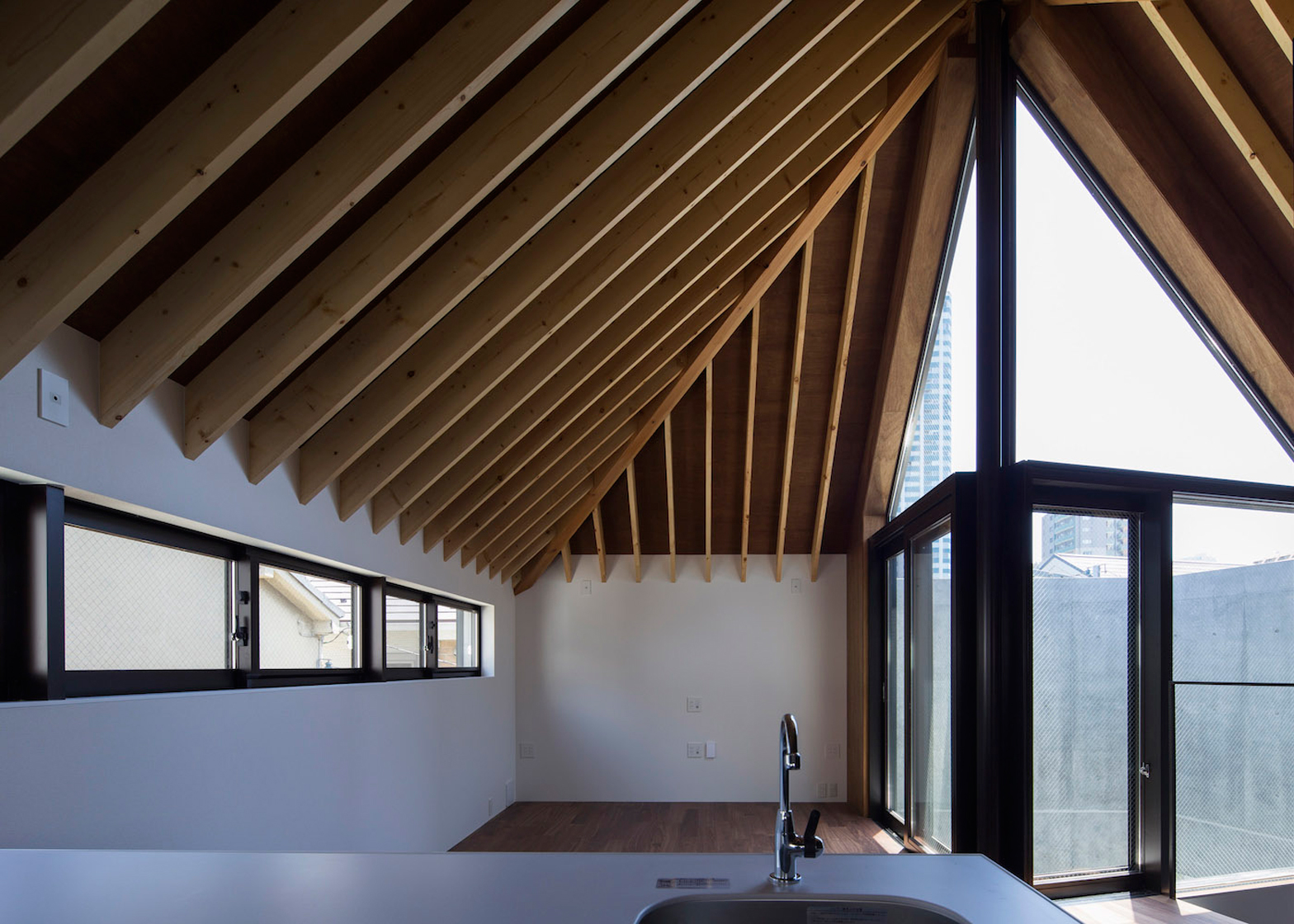A pointy wooden roof tops this concrete house in Tokyo, which led Apollo Architects & Associates to name the building Hat.
The three-storey house is located in Shinjuku ward, an area where the Japanese architects claim you can find "the remnants of the good old days of Tokyo".
Their challenge was to develop a design that responds to the varied local vernacular, but that also has a high resistance to earthquakes – an issue that has become more prevalent since the events of 2011.
The result is a seemingly cube-shaped structure with thick reinforced-concrete walls and a more traditional timber-framed roof.
"The charming appearance of the exposed concrete box topped with a roof resembling a pointed hat catches the eye of passers-by," said studio founder Satoshi Kurosaki.
The building provides a home for a couple in their 50s, as well as the mother of one of the pair – as it replaces the old family house she previously occupied.
The mother occupies the house's semi-sunken ground floor, while the clients have the first and second floors above.
The family living room is located on the uppermost floor, framed by the angled wooden beams of the roof structure overhead.
It is a feature that Apollo has created in several properties, including an ark-inspired house and a home that references the work of Finnish architect Alvar Aalto.
From this space, residents can look down through large triangular windows onto a triple-height, open-air courtyard that forms the house's entrance.
"One feels a distinct centripetal force in the loft-like small space with a courtyard, which somehow reminds one of a yurt, a dwelling of Mongolian nomads," said Kurosaki.
"The entire roof is lit up by the ambient light, creating a sense of security in such a small space, as if staying under the shelter of a big tree," added the architect.
A children's bedroom is also located on this floor, while the clients' master bedroom and bathroom are located on the middle level, along with a pair of separate study rooms, flanked by walls of storage.
The ground floor takes the form of a studio flat, with a simple living and dining space, separate bathroom and kitchen areas, and a traditional Japanese tatami room.
"Although it appears rather closed from the outside, the interior space has a sense of openness, achieved by providing abundant natural light from the courtyard," added Kurosaki.
Materials are left exposed both inside and outside the building, creating a variety of tones and textures that include smooth concrete, dark metal, walnut floorboards and white-painted walls.
Other details include slender strip windows and a staircase with open risers, to allow light to filter through.
The house was completed in June 2016 and has an overall floor area of 79 square metres.
Apollo Architects & Associates now has offices in Japan, China and South Korea. Other projects by the firm include a narrow house on a Tokyo high street and a combined house and hair salon.
Photography is by Masao Nishikawa.
Project credits:
Architecture: Apollo Architects & Associates (Satoshi Kurosaki)
Structural engineer: Nomura Structure (Nomura Motoi)
Mechanical engineer: Naoki Matsumoto
Lighting design: Sirius Lighting Office

